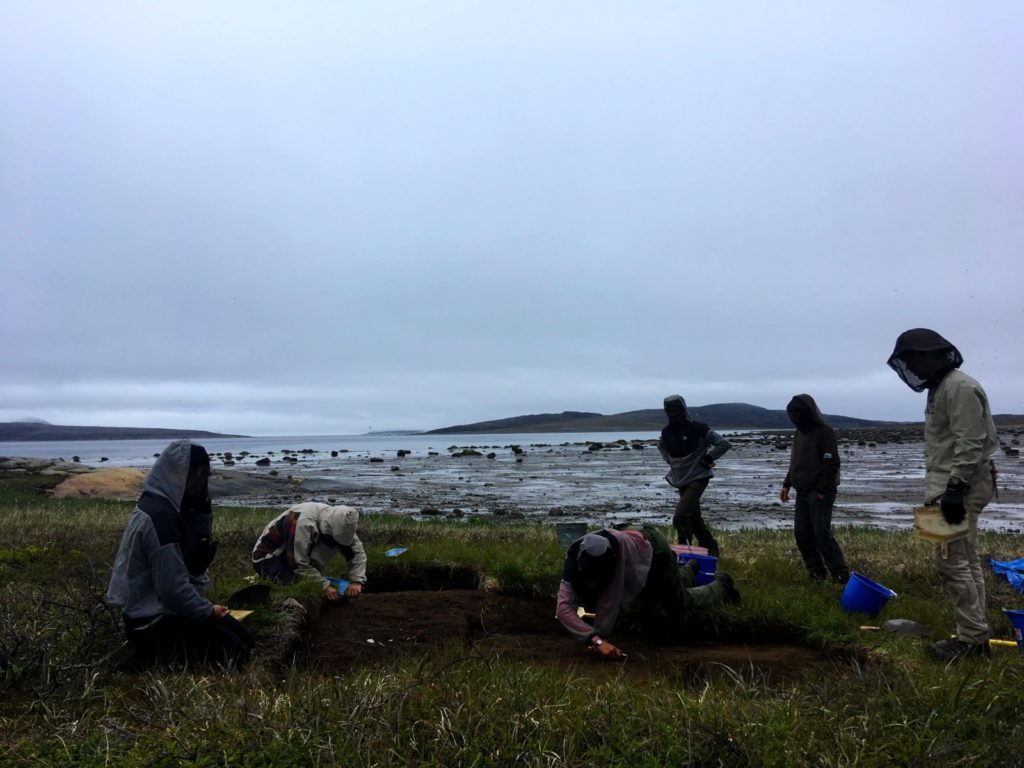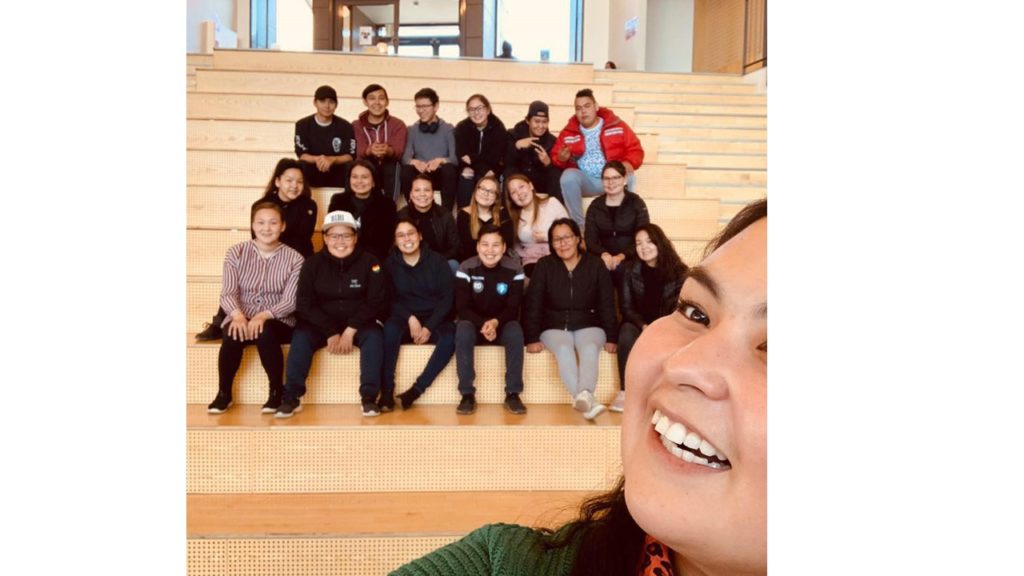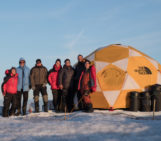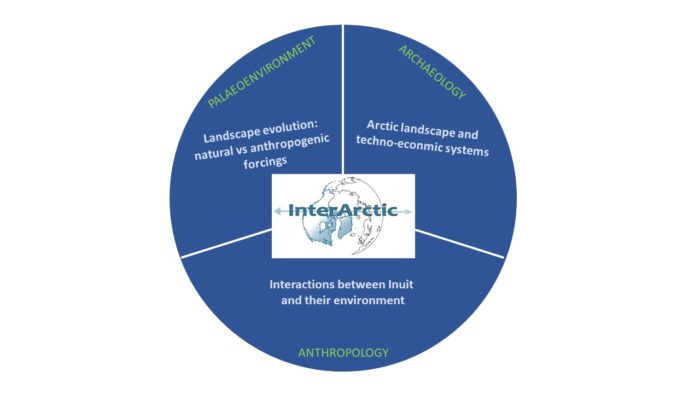
The InterArctic project (Fig. 1) focuses on vulnerability, resilience and adaptation of northern societies facing global change. The current rapid warming of Arctic and Subarctic climates has already produced many changes in the social, economic and cultural behaviour of the populations inhabiting these regions and more changes are expected to come. In this context, looking at the past provides the opportunity to document the complex relationships between climate, ecology and human societies, which may provide a deeper understanding into ways of better facing the future. The chronological frame of the project encompasses the last millennium, a well-documented period by both ice core data and historical archives. The study area includes Eastern Canada (Nunavik, Nunavut and Nunatsiavut) and Greenland (South and North). Around 1000 years cal. AD, some of these areas witnessed the meeting between European farmers coming from Scandinavia, and hunters arriving from Eastern Siberia. Today, these two lifestyles are still coexisting, with farming in South Greenland, and hunters/gatherers/fishers in Nunavik, Nunavut, Labrador coast and Greenland (Fig. 2). Within these study areas, our aim is to document 1000 years of interactions between Thule/Inuit people, Norse settlers and their environment, through an interdisciplinary approach exploiting different kinds of natural archives.
The project has begun in 2018, and fieldwork in Greenland (Ittoqqorttoormiit, Kapissillit and Nuuk area) and Canada (Labrador Coast, Nain area – Nunavit) have been conducted during the summers of 2018 and 2019. Unfortunately, the Covid-19 crisis has stopped all fieldwork in 2020. The first fieldwork in Greenland has focused on areas 1 and 4 (Fig. 2). Pedo-sedimentary archives (lakes, peat deposits, soils etc.) and palaeoenvironmental are used for multiproxy analyses in order to highlight landscape evolution and climatic and anthropogenic forcing upon ecological processes. Fieldwork in zone 4 is related to mediaeval Norse farmers impact in the so-called Western settlement (Nuuk area). Three lakes have been cored in 2018 and the first results suggest a weak human impact. Studies developed on the East coast deal with sea bird dynamics and their impact on the environment. Sediment cores from lakes and peat deposit adjacent to little auk (Alle alle) breeding sites (Fig. 3), are used to detect the presence of the little auk through time. These seabirds are essential hunting targets across our study area, and their populations appear to have undergone contrasting dynamics through time. The first results (pollen analysis and radiocarbon dates) enable to trace the fertilization effect of little auk droppings both on lake waters and nearby vegetation. An array of seabird presence indices using reflectance spectrophotometry, hyperspectral analyses of organic matter, stable isotopic analyses of carbon and nitrogen, as well as phytoplankton, are in progress. This task will be completed by little auks monitoring and interviews with local hunters.
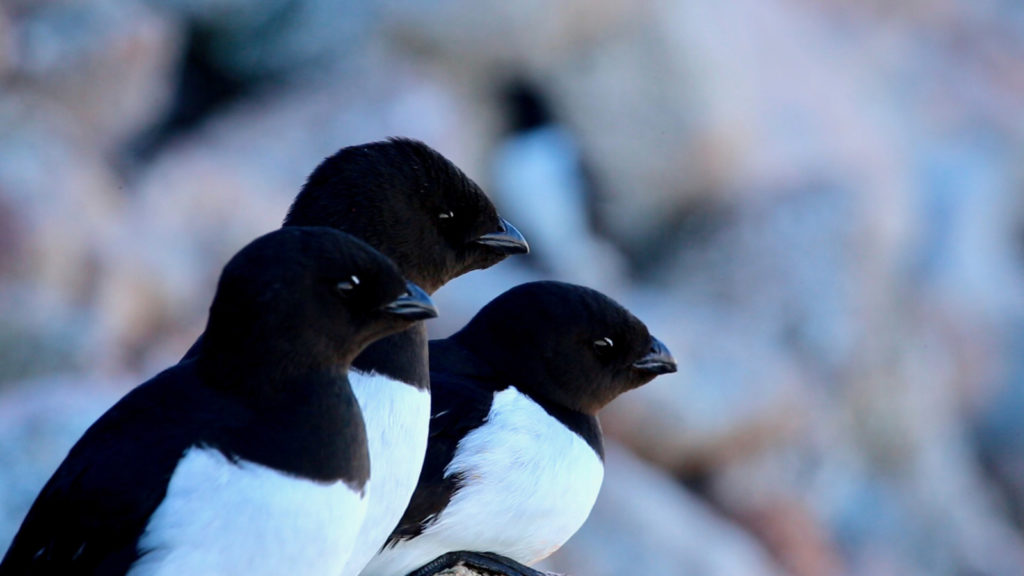
Figure 3. Little auks at Cap Hoegh (East Greenland, 70°N). Sea birds have created a unique habitat with a green and diversified vegetation. Photo: E. Gauthier.
Archaeological sites, and more specifically archaeological soils, ecofacts and artefacts, give precious information about the nature of interactions between societies and the environment. The archaeological studies developed in the project aim at understanding the establishment of technical and economic systems and their evolutions over long timescales, in several study areas (Nunavik, Labrador and East Greenland). The transformations of the economic organization on a territory – including material equipment – can be related to environmental modifications, historic events or technical transfers. Nearby the little auk colony studied in East Greenland, a large Thule archaeological site has been surveyed with the help of a drone. The same method was used on the Labrador Coast in the Nain area and provided an opportunity to implement and test new protocols for field data recording based on airborne photogrammetry. The data acquired spans various fields and research issues, ranging from archaeology to geomorphology and ecology. Excavations of sod-houses have also been conducted during summer fieldwork on Autlasivik and Dog islands (Fig. 4). The work carried out on these Thule sites (17-18th century) document the subsistence savings and question the modalities of the appearance of multi-family structures, in connection with the first contacts with Europeans.
A third part of the project uses complementary anthropological/cultural approaches to investigate human memory, perception, practices and prospects of environmental and social changes, archaeological heritage and past settlement location choices, of six communities in Greenland and Canada. These issues are explored in an interdisciplinary work through open interviews and co-design workshops bringing Inuit elders and youth together with project researchers. Coproduced knowledge (blending traditional and scientific), including Inuit visual documentation of the community changes and the writing of science fiction narratives, will be shared through innovative educational projects such as an interactive web platform designed to share project results, involving local partners in Greenland (Fig. 5) and Canada as well as French secondary schools and universities.
This post has been edited by the editorial board.


